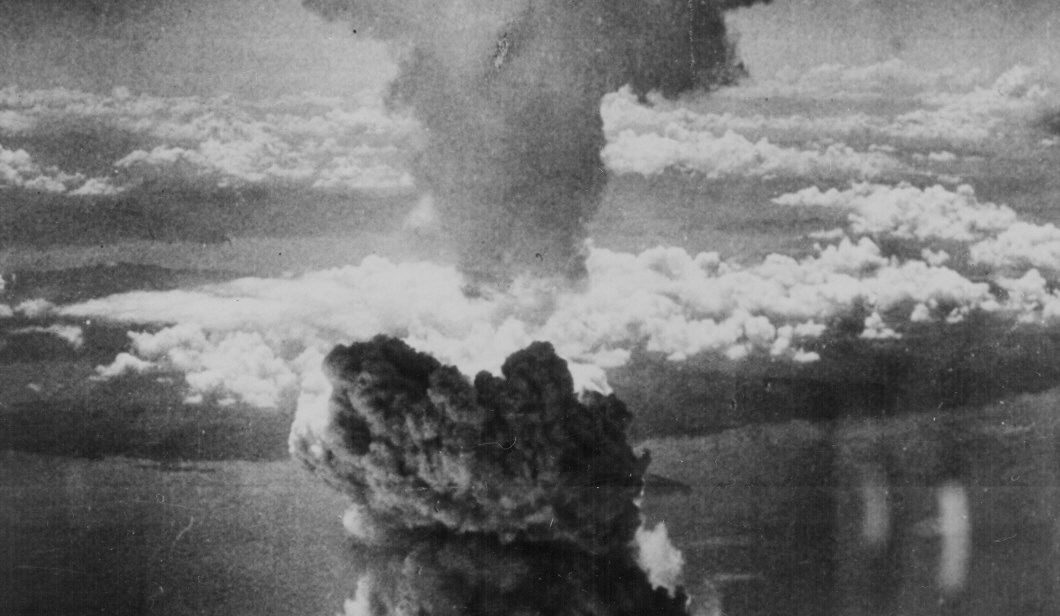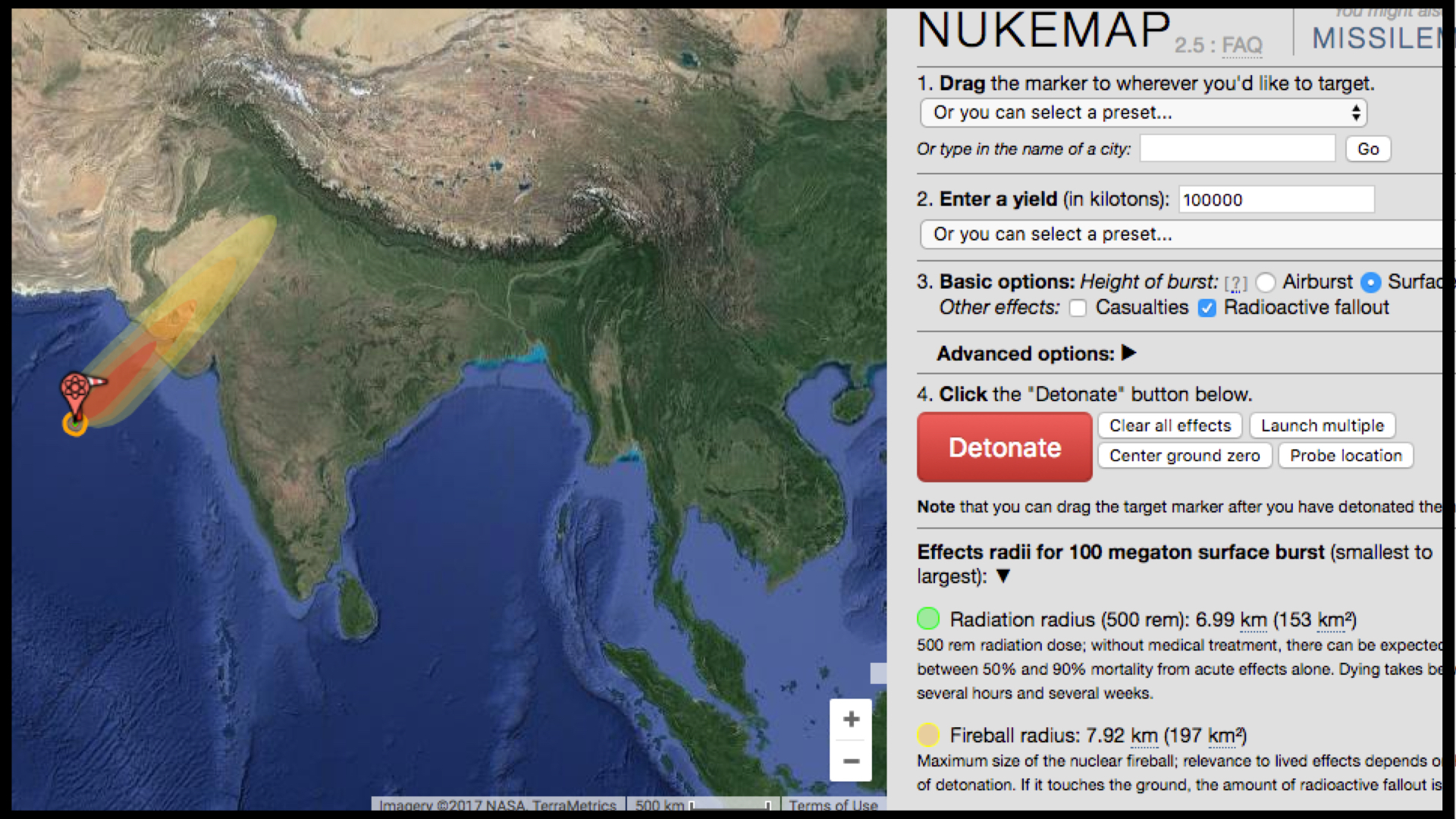
Interactive
Wellerstein, Alex, “NukeMap.” College of Arts and Letters, Stevens Institute of Technology, nuclearsecrecy.com, 2012-2017.
Check out Super Critical Podcast, which examines nuclear issues through a pop-culture lens. Episode #19- Fallout looks at the video game Fallout and after-effects of nuclear war.
Books
Chauhan, Anil, Aftermath of a Nuclear Attack: A Case Study on Post-strike Operations (Pentagon Press, 2010).
Jeanloz, R. “Long Range Effects of Nuclear Disasters” in Drell, S. D. & Shultz, G. P. “The Nuclear Enterprise: High-Consequence Accidents: How to Enhance Safety and Minimize Risks in Nuclear Weapons Reactors” Hoover Institution Press. Stanford, California. 2012: 107-126.
Academic/Journal Articles
Robock, Alan and Toon, Owen Brian. “Local Nuclear War, Global Suffering,” Scientific American, (January 2010): 74-81.
Holley, Eric R., Liska, Adam J., Oglesby, Robert J. and White, Tyler R. Oglesby “Nuclear Weapons in a Changing Climate: Probability, Increasing Risks, and Perception.” Environment: Science and Policy for Sustainable Development Vol 59. (June 2017): 22-33. 1.
Robock, Alan, Lee-Taylor, Julia, and Toon, Owen B. “Multidecadal global cooling and unprecedented ozone loss following a regional nuclear conflict.” Earth’s Future Vol 2, Issue 4. (April 2014): 161- 176.
Janetti, Adrienne and Langan-Riekhof, Maria.“Expecting the unexpected: Four potential shocks in the Middle East and South Asia in 2017.” Brookings Institution, February 23, 2017.
Ahmed, Mansoor.“Pakistan’s Tactical Nuclear Weapons and their Impact on Stability.” Carnegie Endowment for International Peace, June 30, 2016.
Khan, Feroz Hassan “Going Tactical: Pakistan’s Nuclear Posture and Implications for Stability”, Proliferation Papers, No. 53, September 2015.
Giesey, Andrew., Khan, Feroz Hassan., Morgan, Ryan and Wueger, Diana. “South Asian Stability Workshop 2.0: A Crisis Simulation Report.” Report Number 2016-001. (February 2016). 4.
Hauer, Jerome M “US Cities Are Not Medically Prepared For a Nuclear Detonation.” Bulletin of the Atomic Scientists Vol 73. (June 2017): 215-219.
Hanfling, Dan, Burkle Jr, Frederick M., and Dallas, Cham. “The Right Planning Now Will Save Countless Lives After a Nuclear Attack.” Bulletin of the Atomic Scientists Vol 73. (June 2017): 220-225.
Kucharik, Christopher J., Özdoğan, Mutlu, and Robock, Alan. “Impacts of a nuclear war in South Asia on soybean and maize production in the Midwest United States.” Climate Change Vol 116. (June 2012): 373-387
Karnad, Raghu. “Regional Nuclear War in South Asia: Effects on Surrounding Countries,” Medicine & Global Survival Vol 6. (August 1999): 24-27
Cohen, Stephen Philip.“Nuclear Weapons and Nuclear War in South Asia: An Unknowable Future.” The Brookings Institution. (May 2002).
“The Global Impact of a Limited Nuclear War in South Asia: Famine, Disease and War.” The Brookings Institution. The Center for Arms Control and Non-proliferation (December 2013).
Helfand, Ira. “Nuclear Famine: A Billion People at Risk.” Physicians for Social Responsibility. (March 2013).
DiCarlo, A. L., C. Maher, J. L. Hick, D. Hanfling, N. Dainiak, N. Chao, J. L. Bader, C. N. Coleman, and D. M. Weinstock. “Radiation Injury after a Nuclear Detonation: Medical Consequences and the Need for Scarce Resources Allocation.” Disaster Medicine and Public Health Preparedness 5 (March 2011).
Malhotra, Aditi. “Assessing Indian Nuclear Attitudes.” Stimson Center. (Winter 2016)
Sproull, Mary, Camphausen, Kevin, & Koblentz, Gregory “Measuring radiation doses in mass-casualty emergencies.” Bulletin of the Atomic Scientist. (October 7, 2017)
Bell, William C., & Dallas, Cham E. “Vulnerability of populations and the urban health care systems to nuclear weapon attack – examples from four American cities,” International Journal of Health Geographics, (2007). 6:5
Burkle, Frederick M. Jr, Potokar, T., Gosney, James E. Jr, & Dallas, C. “Justification for a nuclear global health workforce: Multidisciplinary analysis of risk, survivability & preparedness, with emphasis on the triage management of thermal burns.” Conflict and Health, (2017). 11
Dallas, C. E., Klein, K. R., Lehman, T., Harris, C. A., & Swienton, R. E. “Readiness for Radiological and Nuclear Events among Emergency Medical Personnel.” (2017). Frontiers in Public Health.
Loretz, J. & Sharkey, R. “Humanitarian and Impact Risks.” International Campaign to Abolish Nuclear Weapons (2016)
“Catastrophic Humanitarian Harm,” International Campaign to Abolish Nuclear Weapons (August 2016)
Carter, A. B., May, M. M., & Perry, W. J. “The Day After: Action in the 24 Hours Following a Nuclear Blast in an American City.” The Preventative Defense Project. May, 2017.
Ramana, M.V. “Bombing Bombay? Effects of Nuclear Weapons and a Case Study of a Hypothetical Explosion.” IPPNW Global Health Watch Report 3, 1999.
News/Op-Ed Articles
Karnad, Raghu. “In The Unfortunate Event That New Delhi Is Nuked. . . ,” The Caravan, May 23, 2014.
Mian, Zia. “Nuclear War in South Asia,” Institute for Policy Studies, June 2002,
Bressan, David. “Even A Small Nuclear War Would Still Have Effects On Global Scale,” Forbes Magazine, August 12, 2017.
Polling
“Global Public Opinion on Nuclear Issues and the IAEA: Final Report from 18 Countries,” GlobeScan, 2005.
Stokes, Bruce, Manevich, Dorothy, and Chwe, Hanyu, “Three Years In, Modi Remains Very Popular,” Pew Research Center, November 15, 2017.
Medcalf, Rory, “Lowy Institute India Poll 2013,” Lowy Institute for International Policy, 2013.
Kapur, Devesh, “Public Opinion and Indian Foreign Policy,” India Review, 8(3), 286–305, 2015.

